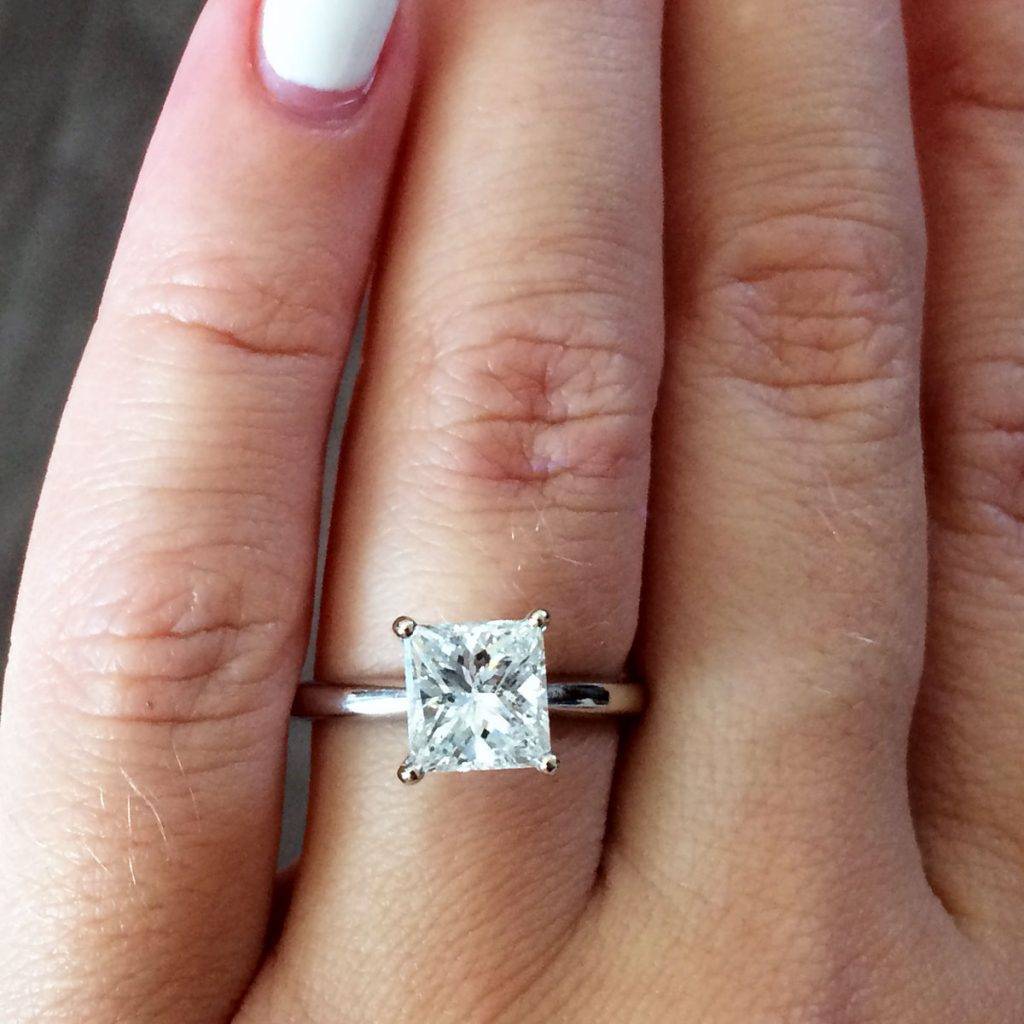
When it comes to selecting a diamond, the allure of size is often paramount in the minds of many consumers. Much like in the world of art, where certain paintings draw the viewer’s eye not just through their subject but through their proportions, the cut of a diamond plays a pivotal role in how large and radiant it appears. The question, “Which cut of diamond looks the biggest?” invites an exploration that transcends mere measurements, leading us to examine the interplay between artistry, perception, and light.
The cut of a diamond fundamentally influences its brilliance, but it is also the physical dimensions that contribute profoundly to the optical illusion of size. Among the various diamond cuts, certain styles are recognized consistently for their ability to appear larger than others. This article endeavors to illuminate these particular cuts, exploring the aesthetics and optical characteristics that contribute to their grandiose appearance.
1. The Round Brilliant Cut
The round brilliant cut is the crown jewel in the world of diamonds, often lauded for its timeless elegance and unparalleled sparkle. Its design consists of 58 facets, beautifully engineered to capture and refract light, resulting in a mesmerizing scintillation. Although it boasts a classic profile, its inherent symmetry contributes to the optical illusion of size. A round brilliant diamond tends to look bigger than its carat weight due to the way light interacts with its facets, creating a luminescence that is difficult to rival. The contrast between brilliance and light creates an enchanting effect that can make the stone seem larger in scale than it is.
2. The Oval Cut
Like a delicate drop of dew clinging to a petal, the oval cut possesses its own unique charm. This shape extends the diamond in an elongated form, giving it a potential edge in perceived size. It reflects light similar to the round brilliant cut, yet its shape can create the illusion of a more generous carat weight. Evoking thoughts of fluidity and motion, the oval diamond captures the essence of modernity and elegance, making it a popular choice among those seeking to project grandeur without compromising on contemporary style.
3. The Pear Cut
The pear cut, resembling a teardrop or a lustrous pearl, is a clever hybrid of the round and marquise shapes. This unique silhouette offers the wearer an illusion of longer fingers and an elongated appearance, enhancing the perceived size of the diamond. Much like a whimsical drop of rain, the pear cut dazzles with its brilliant facets that catch the eye from multiple angles. This exceptional cut is particularly appealing for those looking to wear their diamond in a pendant or a drop earring, as it enhances the linearity of the body, often making the jewel appear larger than its measured carat weight.
4. The Marquise Cut
The marquise cut is an embodiment of opulence; its elongated, boat-like form allows it to present a grand appearance even at lower carat weights. Inspired by the form of a woman’s lips, its unique shape is notorious for maximizing the diamond’s surface area, providing an exquisite visual that could deceptionally suggest greater mass. Aptly named after the Marquise of Pompadour, this cut is steeped in history and allure. The marquise cut’s corners and sharp lines can create a striking presence, ensuring it garners attention whilst cleverly optimizing its apparent size.
5. The Radiant Cut
Imagine a diamond imbued with fire and brilliance—this is the essence of the radiant cut. With its combination of a square and rectangular silhouette and a brilliant facet pattern, the radiant cut captures light spectacularly. This cut not only offers a contemporary appeal but also yields the advantage of apparent size due to its depth and breadth. The radiance from within enhances perceptions of grandeur, as its intricate facets help mask any inclusions and flaws, thus giving the impression of a cleaner, larger gem.
6. The Asscher Cut
The asscher cut exudes sophistication similar to a vintage wine in an elegant crystal decanter. With its squarish shape and step-cut facets, this cut offers a unique allure that is distinctly geometric yet monumental. Though not as traditionally associated with ‘size’ as the others, its reflections and scintillation can create an optical experience that makes it seem larger. It echoes the elegance of bygone eras, evoking feelings of nostalgia and timeless appeal that might resonate with those drawn to the historical and aesthetic depth.
7. The Cushion Cut
Often described as a “pillow” of light, the cushion cut possesses rounded corners and larger facets, allowing for enhanced brilliance and fire. It’s an enigmatic cut that hints at romance and vintage charm, often bringing to mind the elegance of the Edwardian era. While it may not have the sharp linearity of the marquise or asscher cuts, the cushion cut’s soft and inviting form can enhance the diamond’s perceived size through its gentle sparkle and apparent depth. This cut is an emblem of both modern and traditional tastes, appealing to a broad spectrum of preferences.
In summary, the perceived size of a diamond is greatly influenced by its cut. As one navigates through the myriad of choices, it is vital to take into account not only the carat weight but also the optical characteristics that each cut embodies. Beauty, much like perception, is subjective; thus, selecting the diamond cut that resonates with personal style and aesthetics may ultimately lead to a choice that feels grand, regardless of its actual size. The allure of a diamond transcends its dimensions; it is the brilliance, the sparkle, and the emotion it evokes that truly counts.
